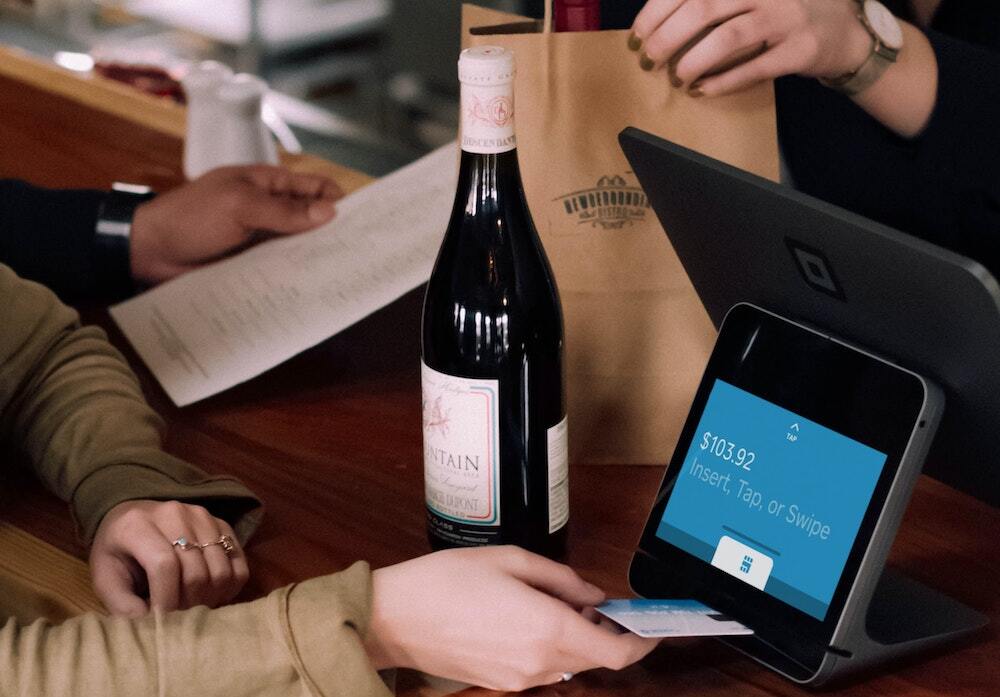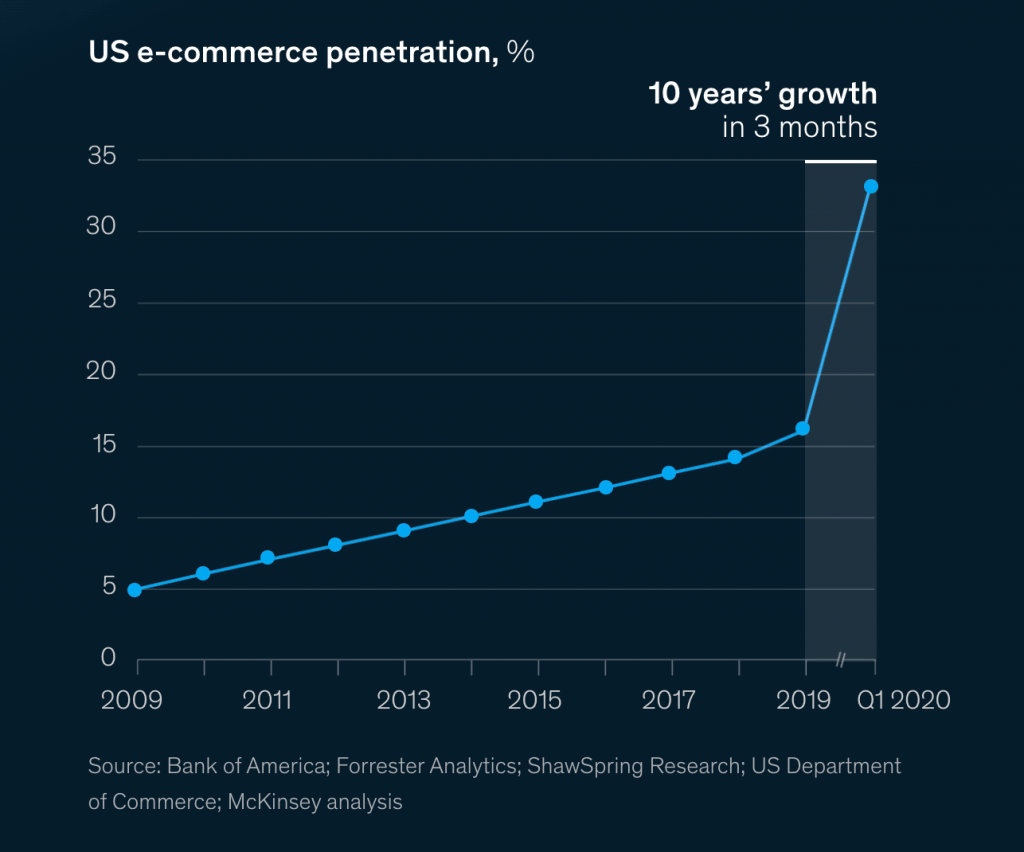How Retail Businesses are Tripling their Average Customer Value

During the pandemic there was a common take that 10 years of innovation had happened in just 90 days. But now that stores have opened, have we given back some of that progress?
The 10 year idea wasn’t just clickbait, but it was a bit oversimplified. In a Mckinsey study published in Q2 of 2020, they were able to show that commerce’s penetration into the market grew steadily at about 1% per year from about 2009-2019, then in a single quarter it gained 10%, or the equivalent of 10 years of growth.

Fast forward to today, and a new report shows that e-commerce has now declined about 2% while retail has bounced back by 10%, even above 2019 levels.
What we’re seeing today is not, in fact, a regression – it’s a consolidation. First of all, that massive spike we saw in 2020 was not due to innovation. While there were amazing examples of creativity that enabled people to purchase goods and services online, for the most part the technology didn’t change. A lot more of us are now using Shopify or Stripe, but the platforms themselves are not new.
On the consumer side, we were all forced to do business online, and while many of us developed habits that aren’t going back (online learning, grocery delivery, etc.) there is a natural pendulum effect that happens when we are allowed to return back to the more traditional ways of doing business that we had missed. The consolidation is happening in the middle.
Before 2020 e-commerce was a side hustle. For most retail businesses, e-com was a secondary priority (at best) and got secondary resources. From 2020-2021, e-commerce was the only way that many of us could do businesses, so it was not only our first priority, it was the only part of the business that received our attention.
We’ve since made investments that were necessary to develop real digital capacity, and people are now back in stores, so for the first time we have the opportunity to actually provide what we used to call an “omni” customer experience. Businesses are consolidating resources to truly serve people online and offline with the same level of quality.
Let me make that real for a second:
Junction has been fortunate to work with several retail clients before, during, and after the pandemic, and we’ve advised every one of them to invest heavily in transitioning customers from one experience to the other, meaning that if you have a customer in your store/lobby/front desk, you find a compelling reason to get them to create an online account, sign up for your email, follow you on social, etc. Similarly, if you have an online customer, you find exciting reasons to drive to an offline experience, whether that’s an event, sale, or activation.
Such a great example of online marketing being combined with offline marketing @topshop! #socialmedia #marketing pic.twitter.com/ZLvvQNI3ig
— Catherine Lux (@luxlifeblog) November 30, 2013
We’ve been giving that advice not just because it makes sense to deepen relationships with customers, but because we’ve also been able to show that, on average, a retail customer who has at least one interaction both online and offline is 3x more valuable than a customer who shops only online or only offline. That means without advertising, discounting, or doing any form of promotion, retail businesses can triple the value of their customer base by convincing them to become multi-channel shoppers.
@Starbucks rewarded my addiction with free bonus stars for 9 visits in 5 days! Awesome online/offline blend #ChapmanDigital pic.twitter.com/05L3eh7bqn
— Kristina Demou 👩🏻💻 (@kristinademou) October 31, 2016
Will that math work for everyone? Of course your results may vary, but the Internet isn’t going anywhere, and people have flooded back into the offline world, so the more that we can marry those two experiences, the better we’ll be be able to serve our market, and that’s just good business.
Have you seen great examples of online/offline retail experiences lately? We’d love to see them – give us a shout at hello@wearejunction.com or tweet at us @heyjunction


